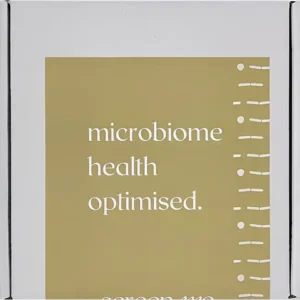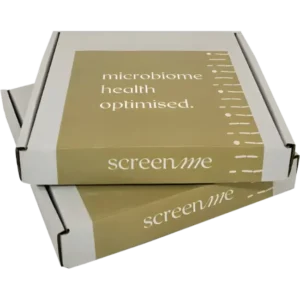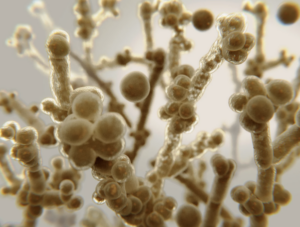What is Endometriosis?
Endometriosis is a condition affecting women during their reproductive years. The endometrial tissue (lining of the uterus) spreads outside the uterus (womb) and causes a combination of pain, bleeding, bladder/bowel symptoms and problems with fertility. ScreenMe have collated a few endometriosis tips to help with endometriosis management and pain.
The Facts:
- Affects 1 in 10 women aged between 15 to 49 (average age at diagnosis is 27)
- Impacts 176 million women worldwide
- Up to 50% of women with endometriosis experience fertility problems
- Risk of ovarian cancer is increased by as much as 30-66% in women with endometriosis
Causes:
Although the most widely accepted theory is that some of the tissue shed during menstruation flows ‘backwards’ through the fallopian tubes into the pelvis or abdomen, the story is not quite that straightforward. This doesn’t explain why endometrial tissue is occasionally found in areas distant to the uterus, suggesting that maybe spread can occur through the blood and/or lymph channels. In some cases, it is also thought that surgery on the tummy can play a role in the spread of this endometrial tissue. Ultimately, this means that there is still much to understand about the condition and talking about it openly can only help.
We Understand Your Struggle
With one tenth of the global population suffering from endometriosis, we want you to know you are not alone.
We understand that you may suffer from a wide range of problems including painful periods, pain during/after sex, pain in your tummy or lower back, feeling sick, having constipation/diarrhea, abnormal vaginal bleeding or tiredness / lack of energy. However, some live without symptoms at all, and it’s increasingly thought that the body’s response to the spread of the endometrial tissue may be more important than the physical presence of tissue outside of the womb. Whatever symptoms you might have, just know that you won’t be the first to have had it.
Medical Management
Diagnosis of endometriosis can be an tough journey. Initial assessment at your GP can be scary, with personal questions and intimate examinations, and referral on to hospital specialists can be intimidating. This is all important though as, unfortunately, there is no simple and easy test to diagnose endometriosis. Blood tests such as CA125 are not recommended — it may be raised in endometriosis, but a normal CA125 does not mean you don’t have endometriosis. Your GP may organise a pelvic ultrasound, but a diagnosis can only be made by direct visualization of the pelvis by laparoscopy (key-hole surgery).
Since endometriosis can present with a myriad of problems, medical treatments should be individualised. For those with minimal symptoms, a watch and wait approach can be taken with close follow-up. For those with symptoms, the generally accepted approach is to start with non-steroidal anti-inflammatory drugs (NSAIDs) for pain and an oral contraceptive pill (OCP) to suppress ovulation. There are of course many other treatment options, ranging from progestogens (e.g., medroxyprogesterone, levonorgestrel, and dienogest), GnRH agonists, GnRH antagonists (Elagolix) and androgens (Danazol). Surgery is also an option, with removal of the endometrial tissue, though this is usually reserved for those with symptoms not responding to medications.
Despite all the above, unfortunately, women with endometriosis often feel that medications are not having the desired effect in controlling their symptoms, and many would rather avoid risks of surgery.
What next?
Recent evidence shows that nutritional and lifestyle interventions are really helpful for women with endometriosis. We want to share evidence-based changes that you can make at home to help improve your wellness and feel a real positive turn in managing your endometriosis.
Endometriosis Diet: Foods to Eat and Foods to Avoid

The abnormal endometrial tissue grows and sheds in response to the hormone oestrogen. As such, balancing your diet with the right foods can help to reduce your oestrogen intake and control your symptoms.
We’ve compiled a range of dietary and nutritional suggestions that will help you on your way to taking back control.
So, if you know that eating 13 servings per week of green vegetables (that is less than 2 per day) gave you a 70% lower risk of endometriosis compared to eating 6 servings per week, or that eating 14 servings of fruit per week (two per day) lowered your risk by 20% compared with fewer than 6 servings per week, what would you do?
Foods that may positively affect endometriosis:
- Fibre rich foods – fruits, vegetables, legumes, and whole grains
- Iron-rich foods – dark leafy greens, spinach, broccoli, beans, fortified grains, nuts, and seeds
- Essential fatty acids – salmon, sardines, herring, trout, walnuts, chia, and flax seeds
- Antioxidant-rich foods – colourful fruits and vegetables, such as oranges, berries, dark chocolate, and beets
Foods that may negatively affect endometriosis:
- Saturated ‘bad’ fats
- Refined sugar
- Foods sprayed with pesticides (contain dioxins)
- Non-organic meats
- Alcohol
Aim for foods with a low Glycemic index and keep meat to once/twice per week (be sure it’s organic). As you seek to make these changes, gain the support of your family members. The type of food choices you make can also help them, thereby improving wellness for the whole family at the same time.
Lifestyle Changes to Ease Endometriosis Pain
There’s plenty of other options in addition to a diet that can help improve your endometriosis symptoms. Try the following:
Go natural/EDC’s:
Consider a full review of all your body, make-up and home cleaning products to minimise your exposure to potentially endocrine-disrupting chemicals that may be making things worse.
Lose weight:
Weight loss (specifically fat loss) can contribute to reductions in circulating oestrogen concentrations, this is because fat acts as a store for oestrogens in the body and can even contribute to its production.
Exercise daily:
Evidence suggests that endometriosis is more controlled in women who exercise regularly with sufficient intensity. Worry not, if you are unable to make it to the gym there are plenty of options at home – dancing to your favourite tunes can give you an easy 30 minutes of exercise!
How Can ScreenMe Help?
A programme designed specifically for you
At Screenme we are here for you every step of the way. We take the hard work, stress and anxiety out of making these changes, making it easy for you to become a better you. We are here to help support you along your journey towards living well with this often exhausting and painful condition and our tailored advice is given to you in the comfort of your own home – with regular testing and consultation follow ups to ensure you are making positive progress.
The ScreenMe difference
- Comprehensive review of your physical, emotional and nutritional health
- Medical blood marker and microbiome testing
- One-on-one tailored video consultations
- Convenient Health App to track your progress
- Nutritious and healthy recipes suited to your specific needs
- Access to a team of passionate and caring medical Doctors, Clinical Nutritionists and Scientists to help you become the best you







